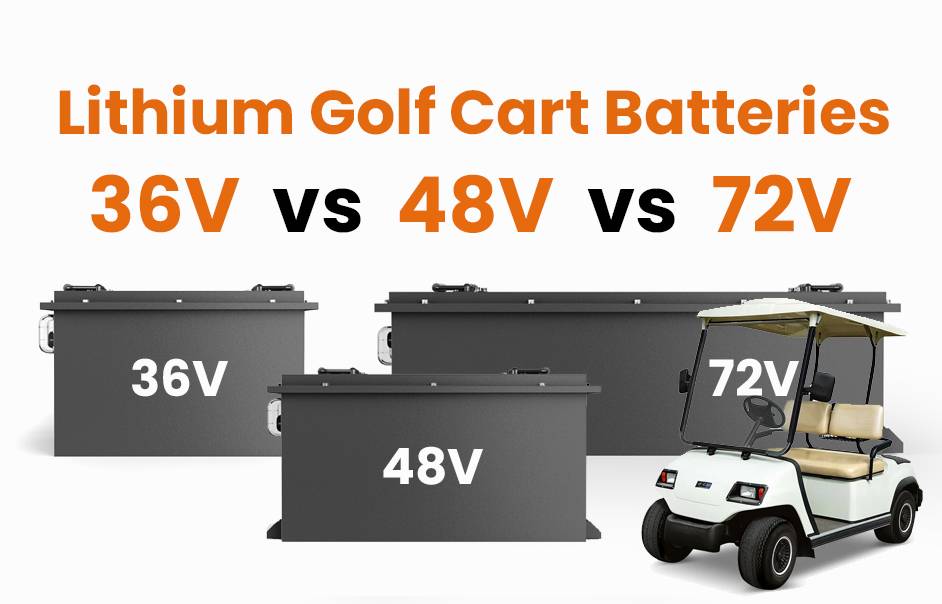
Blog
How to Troubleshoot LiFePO4 Golf Cart Battery Issues?

LiFePO4 golf cart batteries may experience voltage drops, charging failures, or reduced capacity. Common causes include improper charging habits, extreme temperatures, or aging cells. Symptoms like inconsistent performance or sudden power loss often indicate internal BMS (Battery Management System) errors or cell imbalance. Regular voltage checks and temperature monitoring can preempt many issues.
How to Diagnose a Faulty LiFePO4 Battery?
Use a multimeter to measure voltage: a healthy 12V LiFePO4 battery should read 13.3–13.4V when fully charged. Check for physical damage like swelling or leaks. Test the BMS via manufacturer-specific diagnostic tools. If the battery fails to hold a charge or exhibits erratic behavior during load testing, it may require cell replacement or BMS recalibration.
Advanced diagnosis involves checking individual cell voltages using a cell logger. Cells diverging by more than 0.2V indicate balancing issues. Thermal imaging can reveal hotspots suggesting internal shorts. For BMS communication errors, consult the manufacturer’s error code chart—common codes like E03 (over-temperature) or E07 (cell undervoltage) guide targeted solutions. Always wear insulated gloves when handling exposed terminals during testing.
| Diagnostic Tool | Purpose | Ideal Reading |
|---|---|---|
| Multimeter | Measure total voltage | 13.3-13.4V (12V system) |
| Cell Balancer | Check individual cells | 3.2-3.65V per cell |
| IR Thermometer | Detect heat anomalies | <5°C variation between cells |
Why Is My LiFePO4 Battery Not Charging?
Charging failures often stem from incompatible chargers, tripped BMS protections, or low temperatures (below 0°C/32°F). Verify charger compatibility—LiFePO4 requires constant voltage/constant current (CVCC) chargers. Reset the BMS by disconnecting the battery for 15 minutes. If issues persist, inspect terminals for corrosion or loose connections blocking current flow.
How to Reset a LiFePO4 Battery Management System?
Disconnect all loads and chargers. Locate the BMS reset button (often under a rubber seal near terminals). Hold it for 10 seconds until LED indicators flash. For non-resettable BMS models, drain residual power by briefly connecting a 5Ω resistor across terminals. Reconnect components and test—85% of minor BMS faults resolve with this method.
Can You Repair a Swollen LiFePO4 Golf Cart Battery?
Swelling indicates gas buildup from overcharging or internal shorts. Immediately stop using the battery. While minor bulges might stabilize with controlled discharging, significant deformation requires professional re-casing. Never puncture swollen cells—thermal runaway risks are high. Most manufacturers recommend replacement over repair for safety.
Know more:
How to Choose and Buy the Best LiFePO4 Golf Cart Battery?
What Are the Best Wholesale and OEM Options for LiFePO4 Golf Cart Batteries?
What Are the Cost Benefits of LiFePO4 Golf Cart Batteries?
How to Troubleshoot LiFePO4 Golf Cart Battery Issues?
What Should You Know About LiFePO4 Golf Cart Battery Warranties and Support?
How to Get a Quote for LiFePO4 Golf Cart Batteries?
What Maintenance Extends LiFePO4 Battery Lifespan?
Store batteries at 50% charge in 15–25°C environments. Clean terminals monthly with dielectric grease to prevent corrosion. Perform balance charging every 30 cycles using a specialized LiFePO4 balancer. Avoid deep discharges below 20% capacity—unlike lead-acid, LiFePO4 benefits from partial rather than full discharge cycles.
Implement a maintenance calendar: monthly terminal inspections, quarterly capacity tests, and annual professional diagnostics. Use a battery maintainer during off-season storage to prevent self-discharge below 30%. Track cycle counts through BMS apps—most systems alert users when approaching 80% of rated cycles. For fleets, rotate batteries between carts to equalize usage patterns.
“LiFePO4’s cycle life depends heavily on depth of discharge,” says Dr. Elena Torres, battery systems engineer. “Users discharging to 80% instead of 100% can achieve 4,000+ cycles instead of the rated 2,000. Also, pulse charging at 0.5C with 2-minute rests every 15 minutes reduces lithium plating by 37% compared to continuous charging.”
How Does Temperature Affect LiFePO4 Performance?
LiFePO4 batteries lose 15–20% capacity at -10°C (14°F) and risk permanent damage if charged below 0°C. Above 45°C (113°F), accelerated degradation occurs. Use insulated battery boxes in cold climates and avoid direct sunlight. Some advanced BMS units include thermal regulation, but external temperature controls are still recommended.
Conclusion
Proactive troubleshooting of LiFePO4 golf cart batteries combines voltage monitoring, proper charging protocols, and environmental controls. While these batteries outperform traditional lead-acid types in lifespan and efficiency, their sophisticated BMS systems demand informed maintenance. Always prioritize manufacturer guidelines—70% of warranty claims stem from user errors like improper storage or charger mismatches.
FAQs
- Q: Can I use a regular lead-acid charger for LiFePO4?
- A: No—LiFePO4 requires specific voltage parameters (14.4–14.6V for 12V systems) to prevent overcharging. Lead-acid chargers often exceed these limits.
- Q: How long do LiFePO4 golf cart batteries last?
- A: Properly maintained, they deliver 8–10 years or 2,000–5,000 cycles at 80% depth of discharge—3× longer than AGM batteries.
- Q: Are LiFePO4 batteries waterproof?
- A: Most are IP65-rated for dust/water resistance but avoid submersion. Saltwater exposure requires immediate rinsing with distilled water.





